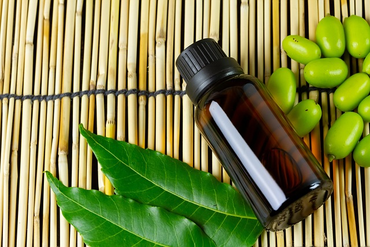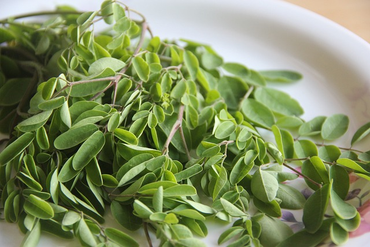
In pursuit of flawless, glowing skin, the beauty industry often presents a myriad of options, from serums to creams, each promising positive results. Yet, among these choices lies a timeless skincare secret that can nourish dry skin: body oil. Far more than just a moisturizing agent, body oils offer a holistic, all natural approach to skincare, nourishing and moisturizing the skin.
In this article, we'll explore how to make body oil at home, guiding you through a simple process to create your own luxurious blend tailored precisely to your skin's needs and personal preferences.
Embracing the DIY approach to body oil allows you to customize scents that soothe your senses. Whether you're a seasoned skincare enthusiast or a newbie looking to elevate your routine, making your own body oil is a simple, satisfying way to unlock your skin's natural radiance and indulge in a beautiful personalized skin care experience.
Body oil is a moisturizing product designed to hydrate and help the skin glow. Learning how to make body oil at home offers several advantages over store-bought options:
Control Over Ingredients: When you craft your own body oil, you have full control over what goes into it. This means you can choose high-quality, natural ingredients and avoid harsh chemicals and synthetic fragrances often found in commercial products. Body oil is an essential component of a natural skin care routine.
Customization: Everyone's skin is different, and making your own body oil allows you to tailor the formula to your specific needs. Whether you need extra hydration, soothing for sensitive skin, or a particular scent, you can customize your body oil accordingly.
Cost-Effective: Creating your own body oil can be more cost-effective in the long run. High-quality body oils can be expensive, but making your own allows you to enjoy the same luxury at a fraction of the price.
Enjoyable Process: It’s an opportunity to experiment with different ingredients and scents, and the satisfaction of using a unique DIY product can enhance your overall customized skincare routine.
In this section, we break down the main ingredients used in DIY homemade body oils. Each plays a crucial role.
A carrier oil is a vegetable oil, derived from the fatty portions of plants, such as seeds, kernels, or nuts. It "carries" the essential oil and helps prevent skin irritation.
There’s a lot of popular carrier oils options to pick from when making your DIY body oil, such as:
Jojoba Oil: Resembling the skin’s natural sebum, jojoba carrier oil is excellent for all skin types, especially oily or acne-prone skin.
Coconut Oil: Coconut oil, rich in moisturizing properties, is a great carrier oil option for treating irritated skin. It also has antibacterial and antifungal properties.
Argan Oil: High in vitamin E and essential fatty acids, argan oil is known for its anti-aging benefits. It hydrates and softens skin, making it ideal for dry and mature skin.
Grapeseed Oil: Its lightweight and easily absorbing properties make grapeseed oil a popular carrier oil option. It's also rich in antioxidants and has anti-inflammatory properties.
Olive Oil: Packed with antioxidants and vitamins, olive oil is highly moisturizing and helps to protect the skin from environmental damage.
Rosehip Oil: Rosehip carrier oil is rich in vitamins A and C, and it's known for its regenerative properties. It helps reduce scars, fine lines, and hyperpigmentation.
Essential oils are concentrated extracts from plants that capture their aromatic and therapeutic properties. In DIY body oils, they add natural fragrance, therapeutic benefits (like calming effects), and allow customization based on skin type.
Fragrance notes in essential oils refer to how they're categorized based on how quickly their scent evaporates and when you notice their aroma after applying them. They help in blending oils effectively to create pleasing and balanced scents for various uses such as DIY body oil.
Here’s a breakdown of the fragrance notes:
Top Notes: These are initial scents that hit your nose right after application. They’re usually light, fresh, and fleeting, like citrusy or herbal aromas. Examples include oils such as lemon, peppermint, and bergamot.
Middle Notes: These notes emerge once the top notes start to dissipate, providing depth and balance. Example include floral scents like lavender, rose, and chamomile, as well as spicy oils such as cinnamon.
Base notes: These are the foundation of the fragrance and they appear right after top notes and middle notes fade away. They're typically rich, deep, long-lasting, adding complexity to the blend.
Enhance your homemade body oils with targeted components for improved skincare benefits and longevity. These fall into two main categories: vitamins and antioxidants for skin nourishment, and natural preservatives to extend shelf life. The table below outlines key ingredients and their specific benefits:
| Components | Benefits |
|---|---|
| Vitamins and Antioxidants | |
| Vitamin E |
|
| Vitamin C |
|
| Antioxidants (Coenzyme Q10, green tea extract, resveratrol) |
|
| Natural Preservatives | |
| Rosemary Extract |
|
| Neem Oil |
|
| Tea Tree Essential Oil |
|
Creating a personalized body oil allows you to tailor both the scent and the skin-nourishing properties to your preferences. Below we've put together a detailed step-by-step body oil recipe to help you craft a luxurious blend that suits your skin and senses perfectly.

Gathering all ingredients and tools beforehand ensures a smooth and organized DIY process for making your luxurious body oils. Follow these instructions:
Select carrier oils such as jojoba, almond, or coconut oil, known for their moisturizing properties and suitability for different skin types.
Select essential oils: like lavender, tea tree, or chamomile, each offering unique scents and potential therapeutic benefits.
Measuring spoons and cups on hand to ensure precise measurements when blending oils.
Prepare small, dark glass bottles with droppers or pump dispensers for storing your finished body oil blends.
Additionally, gather mixing bowls or containers, stirring spoons, and labels for organizing and labeling your craft.
Choosing the right carrier oil is crucial as it forms the base of your body oil and determines its texture and skin benefits. Consider:
Jojoba Oil: Lightweight and absorbs easily, suitable for all skin types.
Almond Oil: Rich in vitamins A, B, and E, great for dry or sensitive skin.
Coconut Oil: Solid at room temperature but melts on contact with skin, very moisturizing.
After selecting your carrier oil, pour the desired amount into a separate small mixing bowl or container. This allows you to measure and blend it with your chosen essential oils accurately.
Add 3-5 drops of your chosen top note essential oil to 30ml (1 oz) of carrier oil.
Some popular bright top note choices include:
Lemon: Refreshing and uplifting, consistent with aromatherapy benefits.
Bergamot essential oil: Citrusy with a hint of floral.
Cinnamon essential oil: Antioxidant-rich, anti-inflammatory properties.
After selecting your top note essential oil, carefully add the drops to the measured carrier oil in a mixing container. Stir gently to blend the oils evenly, ensuring the fragrance is well incorporated into the carrier oil.
Complex Middle Note
Add 5-7 drops of your selected middle note essential oil to the blend.
Some good middle notes options could be:
Rose: Provides a floral and romantic essence that adds depth to the fragrance.
Geranium: Offers a balancing floral scent that enhances the overall complexity of the fragrance, contributing a fresh note.
Chamomile: Has a calming and herbaceous aroma, lending a soothing quality to the fragrance blend once the initial top notes fade away.
Add 3-5 drops of your chosen base note essential oil to the mixture.
Choose from these deep base notes:
Sandalwood: Adds warm, woody, and earthy depth, lingering on the skin for hours with a calming and exotic aroma.
Patchouli: Provides a rich, earthy, and musky scent that adds depth to the blend, lingering sensually throughout the day.
Vanilla: Offers a sweet, warm, and comforting aroma, creating a soft base note with a touch of caramel sweetness.
Mix your oils thoroughly and assess the scent. Adjust the ratio of essential oils to achieve a balanced and harmonious fragrance that suits your preferences. After doing so, allow the blend to sit for a few minutes to let the scents meld together.
Before applying a new blend all over, do a patch test to make sure you don't have any allergies, especially if you have sensitive skin or are using oils around children. Apply a small amount to a patch of skin (like the inner wrist) and wait 24 hours to check for any adverse reactions.
Transfer your body oil blend into a dark glass bottle to protect it from light exposure, preserving its potency and fragrance.
After creating your blend, label each bottle clearly with the ingredients used and the date of preparation, so you can track freshness and identify any sensitivities. Choose dark glass bottles to protect the oils from light exposure, and store them in a cool, dry place to maintain their potency and effectiveness.
Allow your body oil blend to rest for at least 24 hours before using it. This resting period allows the different oils to blend well, enhancing the overall fragrance and efficacy of your custom blend.
After the waiting period, gently massage the oil into your skin, allowing its nourishing benefits and pleasing fragrance to enhance your skincare routine.
Creating your DIY body oils at home lets you customize them to match your skin's exact needs, whether you're dealing with oiliness, dryness, acne, or sensitivity.
Knowing your skin type helps you choose the right base oils and additives, ensuring your skin gets the proper care.
| Carrier Oil | Absorption Rate | Dry Skin Suitability | Oily Skin Suitability | Sensitive Skin Suitability | Benefits | Scent |
|---|---|---|---|---|---|---|
| Jojoba Oil | Medium | Yes | Yes | Yes | Balancing, moisturizing, anti-inflammatory | Neutral |
| Coconut Oil | Slow | Yes | No | Yes | Hydrating, protective, antimicrobial | Light coconut |
| Argan Oil | Medium | Yes | Yes | Yes | Nourishing, anti-aging, improves elasticity | Earthy |
| Grapeseed Oil | Fast | Yes | Yes | Yes | Lightweight, antioxidant, astringent | Light, earthy |
| Olive Oil | Slow | Yes | No | Yes | Deeply moisturizing, antioxidant | Olive scent |
| Rosehip Oil | Medium | Yes | No | Yes | Regenerating, brightening | Mild earthy |
Tailoring body oil recipes to individual needs is a great approach to skin care. By customizing your homemade body oil, you can address specific skin concerns effectively:
Anti-Aging: To combat signs of aging effectively, consider a blend of rosehip seed oil, which is rich in vitamins A and C known for their collagen-boosting properties, along with argan oil to enhance elasticity and promote skin firmness, to improve skin texture and elasticity.
Sensitive Skin: For sensitive skin, gentle oils like jojoba oil, known for its similarity to skin's natural oils and soothing properties, almond oil to moisturize without irritation, are ideal choices.
Acne-Prone Skin: When dealing with acne-prone skin, opt for non-comedogenic oils such as grapeseed oil, which helps regulate sebum production without clogging pores, tea tree oil known for its antibacterial and anti-inflammatory properties to combat acne-causing bacteria, or lavender oil for its soothing effects on inflamed skin.
Professional consultation is advisable in cases of severe skin conditions like eczema or psoriasis, where specialized care may be necessary. Additionally, during pregnancy, consulting a healthcare provider ensures safety and suitability of skincare ingredients for both the mother and baby.
If you find all of this process overwhelming and are looking for an Ayurvedic-inspired alternative, consider our Soothing Body Oil, curated blend.
It's crafted from natural ingredients like lavender, known for its antioxidant-rich, calming, and cleansing properties; calendula, which soothes and comforts sensitive skin; and lemon balm, offering soothing purification and antioxidant benefits.
Versatile in use, the Shankara’s luxurious Sundarya Body Oil serves as a moisturizer, massage oil, and bath oil, rich in nutrients and antioxidants to deeply nourish and protect your skin.
Everyone deserves this beautifully nurturing body oil infused with floral essential oils to enhance their inner and outer beauty.
Our energizing body oil is designed to stimulate the body's energy points and invigorate your senses. Infused with juniper berry, it purifies and tones the skin, while cassia energizes and strengthens it. The warming properties of ginger enhance circulation, delivering a soothing warmth and leaving your skin refreshed and revitalized.
Ensure everything is well combined before use and consider adding natural emulsifiers like beeswax.
Store your oils in cool, dark places away from sunlight and add essential oils gradually to maintain their fragrance.
Incorporate shea butter or vitamin E oil for smoother results.
To create a body oil for glowing skin, start by choosing a lightweight carrier oil like sweet almond or jojoba oil. Add a few drops of skin-loving essential oils such as rosehip seed or lavender for fragrance and skincare benefits. Mix well and store in a glass bottle away from sunlight.
No, body oils generally do not need preservatives. Oils themselves do not support bacterial growth. It's crucial to store them in a cool, dark place to maintain their quality. If oils are mixed with water or used in a way that introduces water, adding a natural preservative like vitamin E can help extend their shelf life.
Yes, body oils are beneficial for the skin, providing moisturization, nourishment, and improved texture. They're rich in vitamins, antioxidants, and essential fatty acids that promote skin health. It's important to choose oils suited to your skin type and perform a patch test to ensure they accommodate individual sensitivities and avoid potential allergic reactions.
Yes, you can add artificial fragrances to homemade body oil for a desired scent, but ensure they're safe for the skin and perform a patch test first.
Creating your own DIY body oil lets you choose natural ingredients tailored to your skin, avoid synthetic additives, personalize your skincare routine, and potentially save money compared to store-bought options.
In Ayurveda, body oil is used in the practice of Abhyanga, a daily self-care ritual involving massaging warm oil into the skin. This helps nourish tissues, promote circulation, and balance the doshas (Vata, Pitta, and Kapha) based on individual constitutions. The oils, made from natural herbs and ingredients, aim to support overall health, relaxation, and skin vitality in Ayurvedic skincare routines.













comments (0)